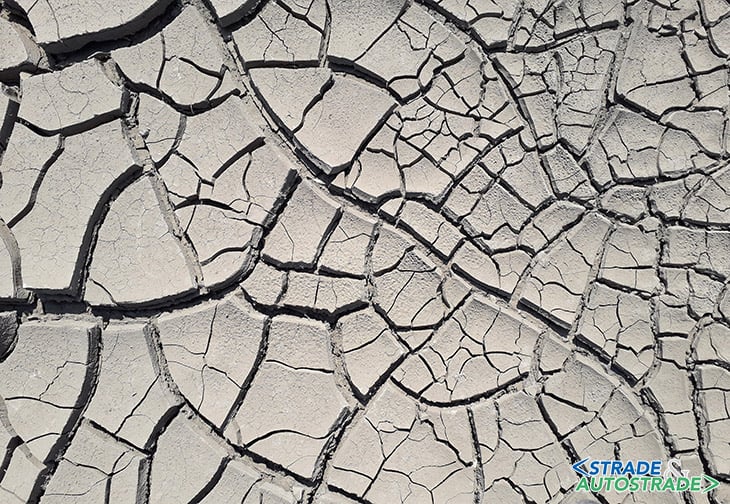![]() Per la versione in Italiano: https://www.stradeeautostrade.it/ambiente-e-territorio/il-trattamento-dei-piani-di-appoggio-dei-rilevati-stradali-in-terreni-instabili/
Per la versione in Italiano: https://www.stradeeautostrade.it/ambiente-e-territorio/il-trattamento-dei-piani-di-appoggio-dei-rilevati-stradali-in-terreni-instabili/
This report briefly describes the methodology adopted within a road reconstruction project in Azerbaijan for the treatment of the weak and unstable roadbed (existing clayey ground surface, often in saturated condition) upon which embankment and pavement layers have to be placed.
Due to inadequate geotechnical investigations and insufficient consideration of foundation conditions during the design stage, the following activities have been undertaken from the start of the project in order to determine the properties of the materials upon which the embankment/subgrade is to be constructed and, accordingly, to assess their suitability as foundation materials under the actual site condition:
- Sampling and Laboratory Testing (Material Properties);
- inspections and Dynamic Cone Penetrometer (DCP) Testing (ASTM D6951) (Site Conditions).
A methodology is presented for determining the thicknesses of unsuitable materials to be removed from the existing ground and replaced with rock fill material and, finally, the necessary quality control to be implemented during the construction (Figure 1).
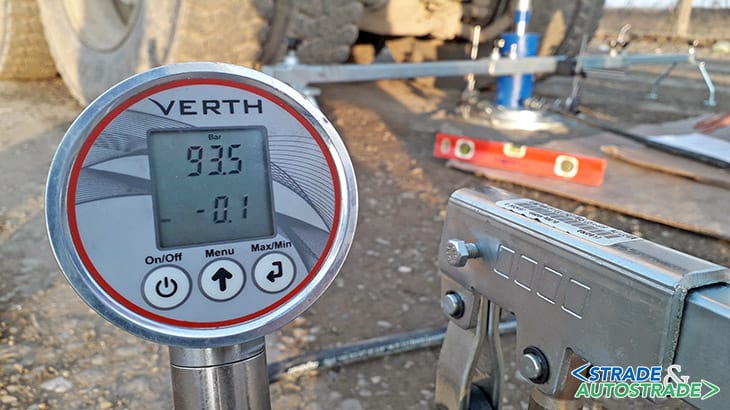
Sampling and laboratory testing
More than one hundred soil samples (spread along the entire road reconstruction project in a period of about four months) have been collected for classification according to AASHTO M 145 procedure.
The existing roadbed materials are mainly classifiable in the subgroup A-7-6 (clays of medium to high plasticity according to Casagrande’s plasticity chart).
Several samples (spread along the same aforementioned period and chainages) have been also tested for California Bearing Ratio (CBR) and the average value (at 95% MDD after four days soaked) is 2.17%.
By correlating the laboratory CBR test results the Modulus of Deformation (EDef) values are always lower than 15 MPa (minimum modulus of deformation value, from plate bearing test/first cycle, generally required for the roadbed).
These laboratory tests results are therefore highlighting that the roadbed materials are to be definitely considered substandard and, finally, generally not suitable as a foundation and it is therefore recognized the necessity of a foundation improvement and strengthening during the construction works (Figure 2).
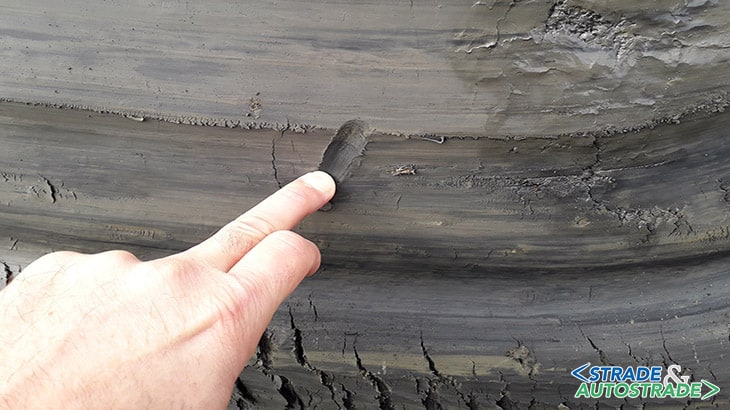
Site inspections and Dynamic Cone Penetrometer (DCP) testing
The situation highlighted by the laboratory test results is further worsened by the following site conditions:
- presence of stagnant water and inadequate drainage systems (further lowering of the bearing capacity of existing ground);
- presence of water-soluble salts.
As supporting evidences of the above observed site conditions, several dynamic cone penetrometer tests have been carried out for each specific area (test method: ASTM D6951).
The dynamic cone penetrometer (DCP) shall be used to identify soft spots in the roadbed.
The DCP measurement results in a field or in situ CBR, however such CBR has only to be intended to evaluate the strength of the materials at site under prevailing conditions and its variations (this means that the in situ CBR differs from the laboratory CBR of the same material).
Conclusions and proposed methodology
With reference to the Contract Drawings and Technical Specifications the following samples shall be collected for laboratory testing (soil classification/CBR) in order to confirm, for each specific area, the expected materials unsuitability (any materials eventually found suitable shall be re-used):
- samples within the existing subgrade/embankment;
- samples below the existing subgrade/embankment (roadbed).
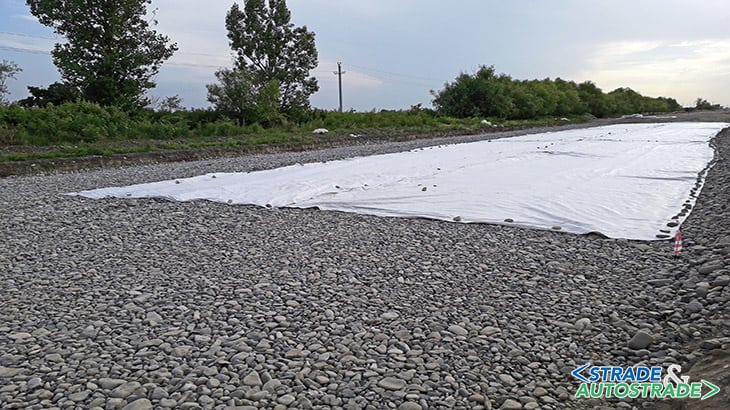
If such unsuitability is confirmed, the following activities shall be undertaken:
- removal of the existing unsuitable subgrade/embankment materials up to the natural ground level (roadbed);
- excluding the waterlogged areas or where the materials appear too soft and unstable, the roadbed shall be compacted over the full width of construction. Field density tests shall be done to check the obtained degree of compaction (due to the clayey properties of the existing unsuitable roadbed and in order to improve the compaction efficiency the sheepsfoot rollers shall be adopted);
- execution of Dynamic cone penetrometer (DCP) tests on the existing ground surface (roadbed) in order to define the correct thickness of soft/unstable roadbed material to be removed (for the purpose of this work, penetration index values DCP ≥ 70 mm/BLOW identify the unstable materials).
Note 1) Since the poor mechanical properties of the soil in place (clay of medium to high plasticity according to soil classification and CBR) make the embankment foundation potentially unstable in the long-term conditions (i.e. in the most unfavourable climatic and hydrogeological conditions) due to very high potential settlements, approximately 30 cm of these materials must always be removed (minimum requirement for the long-term stability regardless of DCP test results).
The DCP test results are used to determine the thickness of additional soft/unstable material to be removed (in addition to the aforementioned 30 cm) if necessary according to the encountered site conditions (saturated or partially saturated soils).
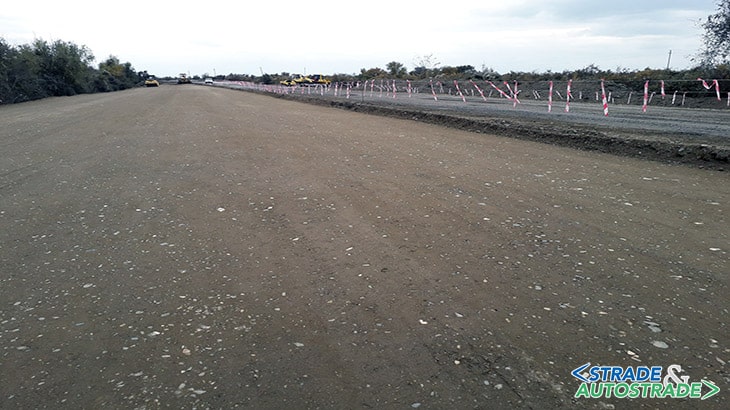
Note 2) Samples for laboratory testing and DCP tests shall be arranged for each construction lot in sufficient number to ensure the representativeness of results obtained.
Finally, unsuitable roadbed materials shall be removed and replaced with the following suitable materials (after unsuitable material removal, the ground surface, where possible, shall be compacted over the full width of construction):
- option 1 (wet areas): filling with alluvial rocky material with Dmax = 200 mm (the use of quarried, fractured, material is preferable, however it seems not available in the Country). The gradation shall be well graded in order to obtain an accurate clogging of voids and, accordingly, a dense layer. A layer of heavy geotextile shall be laid over the compacted stone fill (Figure 3 above);
- option 2 (dry areas in order to reduce the costs): filling with well graded alluvial rocky material with Dmax = 200 mm in combination with embankment material from borrow pit according to proportions to be confirmed during the compaction of the stone fill layer (bottom layer). A layer of heavy geotextile over the compacted stone fill, although not included in the contract documents, is recommended.
The rocky material used to replace the unsuitable material shall be properly compacted till complete stabilization. The occurrence of clayey material on the surface (raised from the existing ground through the stone fill layer during the compaction) is the evidence that the layer of stones is still sinking and therefore, in these cases, it is necessary to add further rocky material and continue compaction.
In the dry areas and according to the DCP test results (i.e. for DCP number values lower than 70 mm/BLOW and, therefore, where the maximum soil thickness to be removed is 30 cm) it is recommended, in order to reduce costs, to compensate the thickness of stone sunk in the existing unsuitable roadbed by using subgrade material on the top of the stone fill layer in order to reach the required level.
All excavated unsuitable materials have to be transported from site and stockpiled to the spoil dumping areas only.
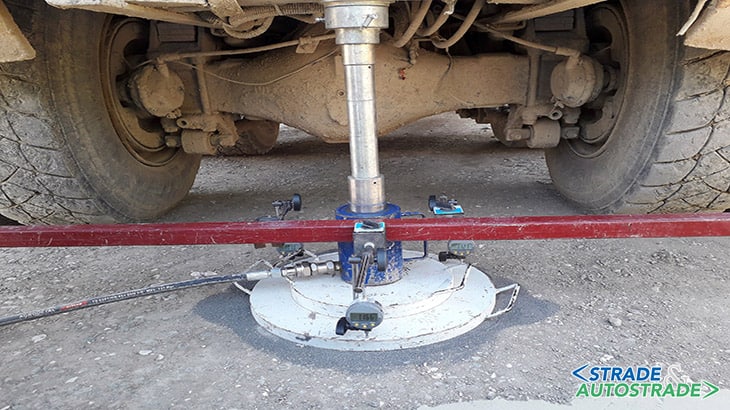
For quality control and approval purposes, in addition to the above mentioned site inspections to be performed during the construction works, the first compacted layer of subgrade/embankment material (i.e. the next layer after the stone filling, Figure 4 above) shall be checked with proof rolling with loaded truck and, accordingly, tested for field density and plate load with bearing plate of 456 mm minimum diameter (the modulus of deformation from the first cycle is finally required to confirm the roadbed stabilization, Figure 5).
It should be finally emphasized that whenever the Contractor is facing unexpected site conditions, new investigations and field trials shall be arranged to confirm the suitability of the proposed construction methods and ensure the required quality of works.
![]() Per la versione in Italiano: https://www.stradeeautostrade.it/ambiente-e-territorio/il-trattamento-dei-piani-di-appoggio-dei-rilevati-stradali-in-terreni-instabili/
Per la versione in Italiano: https://www.stradeeautostrade.it/ambiente-e-territorio/il-trattamento-dei-piani-di-appoggio-dei-rilevati-stradali-in-terreni-instabili/

